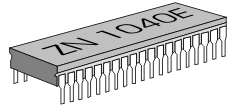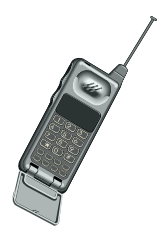|
The impact of the microprocessor has been as far reaching as any development in the history of technology. Twenty years ago computers were on the fringe of our lives but now they control many aspects. Businesses ranging from manufacturing to financial services (Banks) have had to continually educate, retrain their staff and buy new computer systems just to keep up-to-date with this ever changing technology. Below are some examples of some of the way microprocessors have altered our daily lives. |
|
|
What is a Microprocessor ? A ‘microprocessor’ is normally thought of as a single ‘chip’. An example is a CPU (Central Processing Unit) of a computer which controls the main functions of a computer. However, strictly speaking a microprocessor is a collection of chips. A very good example is calculator. Machines, such as washing machines, are controlled by microprocessors. The microprocessor controls the type of wash, the temperature and every other aspect of the washing cycle. Can you name other machines/devices that are controlled by microprocessors ? |
|
|
What is a Computer ? People often get confused when talking about microprocessors and computers. Remember, a micro processor is a collection of chips (Integrated Circuits), such as a calculator. A computer is also a collection of chips. Therefore, it is very difficult to talk about microprocessors without also mentioning computers. |
|
|
When computers were introduced into the business world it was thought that they would bring ‘mass unemployment’, people would be put out of work because a single computer could do the work of many workers. However, computers/microprcessors have made the business world more efficient. An office is more productive when using computers; more letters can be typed up, more information can be kept on customers etc.... Once-upon-a-time all information on customers was stored in filing cabinets which took up lots of space. Now, one computer will store the equivalent of rooms of paper work. |
 |
|
|
|
Industrial robots
have been used on mass production lines for many years. Many ‘hazardous’
(dangerous) jobs are carried out by these robots. Also, many of the
repetitive (boring) jobs are also completed by robots. In manufacturing, ‘automation’ (use of robots) has made it possible to increase production enormously. Robots, computer aided design (CAD) and computer aided manufacture (CAM) have been made possible because of the use of microprocessors. |
|
|
Communications,
such as telephone exchanges have been revolutionised by the use of computer
systems and microprocessors. The growth of ‘cell phones’ and paging devices
are all due to microprocessor technology. |
|
|
Computer Crime Computers and microprocessors have given rise to new
types of crime. ‘Computer hacking’ is a good example. This is when someone
with a computer terminal, in their home or at work, illegally breaks through
the security on another businesses computer system. Occasionally, examples
are seen in the newspapers when a ‘hacker’ is caught trying to break into a
Banks computer system. Can you think of any other types of ‘techno-crimes’ ? |
|
| 1. Explain how computers are
used in schools. 2. How do microprocessors help in the home ? 3. Describe a relatively new ‘techno-crime’ that has developed due to the growth in computers. 4. How do you think microprocessors and computers have affected employment ? 5. How do you think microprocessors and computers will develop in the future ? |
|
|
|
|


